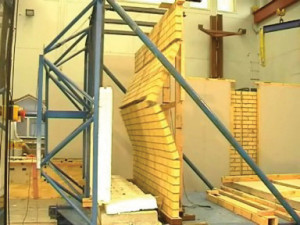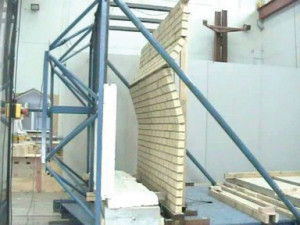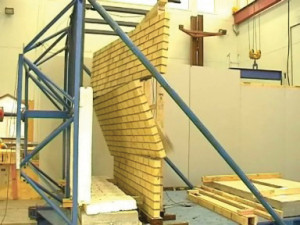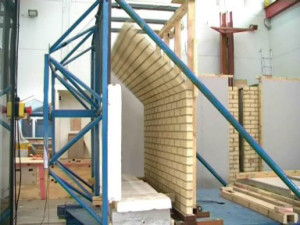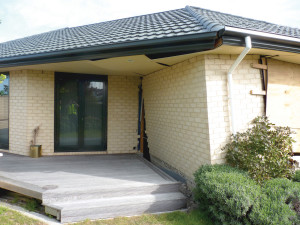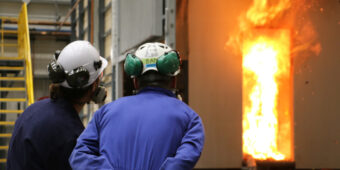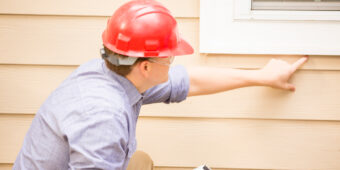Modern mortar practices survive earthquake test
02 Jul 2013, Building and housing, LBP & Regulation, Prove Your Know How
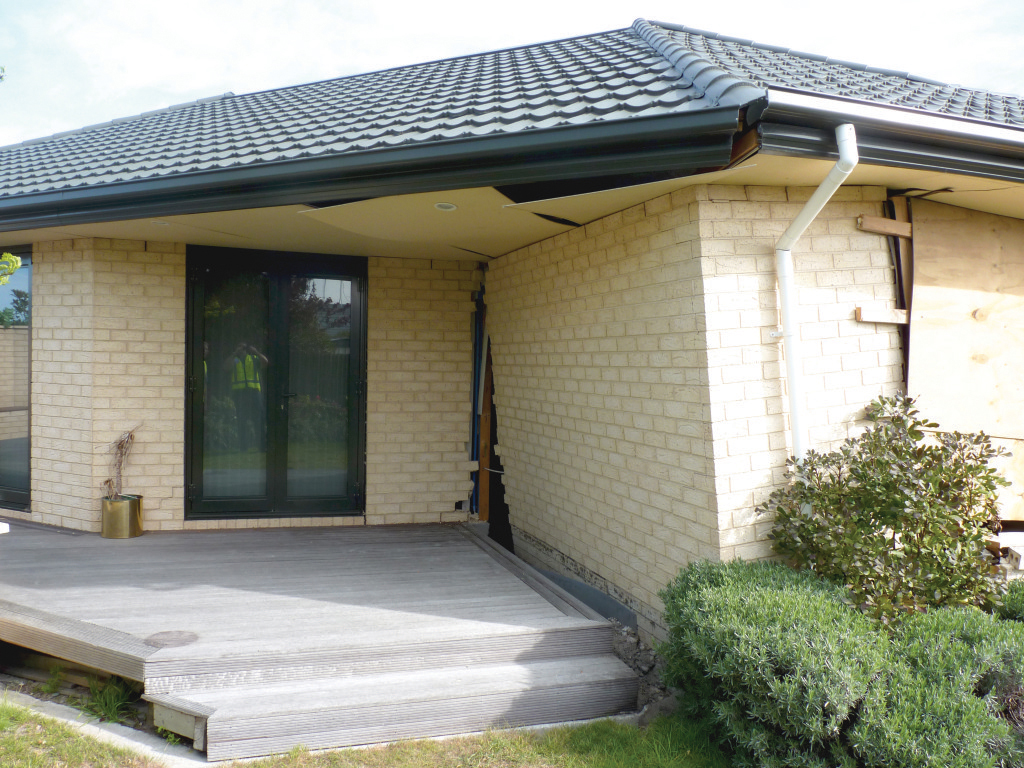
Twisted wire ties are one reason many brick veneer houses failed in past earthquakes, such as in Napier in 1931. However, modern clay brick veneer construction on timber-framed and steel-framed houses generally performed well when subjected to earthquake shaking in Canterbury.
These effects were replicated in BRANZ’s research centre and the results indicated that modern construction details performed well.
Even when the building was distorted well beyond this level of earthquake, damage was far less than expected; there was severe cracking occurring, but with only a few bricks falling away.
Most of the damage in Canterbury associated with brick veneer construction was attributable to ground movement/damage, particularly affecting concrete bricks or older veneer construction, or to poor installation.
Mortar properties and construction practice
There have been concerns that mortar properties are not controlled adequately and therefore contribute to poor earthquake performance. NZS 4210 masonry construction has a strength requirement for structural masonry but not for brick veneer, stating only that mortars for veneers shall follow the strength requirements of masonry suppliers.
However, a minimum strength is required to facilitate good structural and durability performance. Research opinion indicates that this should be at least 6MPa and this can be achieved with mortar mixes of 4:1 sand to cement by volume.
In the Canterbury earthquakes brick veneer failures occurred due to lack of bond between the brick and the mortar because the mortar that had been applied was too dry.
NZS 4210 states that the bond between brick and mortar is the most important single factor affecting brick veneer strength. Recent testing at BRANZ has confirmed this to be the case. Refer to BUILD 127 Dec 2011/Jan 2012, “Brick Veneer stands the test” by Stuart Thurston.
Branz testing
The BRANZ test also confirmed practices that improve bond strength, including:
- Wetting bricks before they are laid.
- Having enough water to get adequate mortar flow.
- Pressing and tapping the bricks to firmly embed them in the mortar.
- Not dislodging or disturbing the bricks once they are placed.
- Minimising the time between spreading mortar, placing the bricks and tooling the mortar joints
- Adequately curing the freshly constructed veneer particularly in hot, dry weather.
The BRANZ testing found that the most important factor to ensure good bond performance is that the mixed mortar contains sufficient water and has an adequate flow rate. This means it should have as much water as the bricklayer can easily handle without any free water forming in the mixing barrow.
Modern clay bricks are manufactured with vertical core holes to reduce weight. The dowelling effect of hardened mortar in these vertical core holes increases the strength of veneer walls. Also because the practice of nailing ties to timber framing has been replaced with the modern screw fixing practice, bricks are no longer disturbed in the mortar by hammering.
BRANZ testing has also shown that it is not necessary to wet bed brick veneer ties, as the performance of brick veneer walls where ties have been dry bedded is acceptable.
Mortar mixes for external brick veneer are specified in NZS 4210 for sea spray areas and for other exposures. Those opting for a stronger mortar and a more consistent mortar mix may use proprietary bagged mortar, where the mix proportions are more accurately controlled under factory conditions.
Register to earn LBP Points Sign in


